I've got a very basic example here. http://jsfiddle.net/jEfsh/57/ that creates a complex path - with lots of points. I've read up on an algorithm that may look over the points and create a simpler set of coordinates. Does anyone have any experience with this - examples on how to loop through the path data and pass it through the algorithm - find the shortest set of points to create a more rudimentary version of the shape?
http://en.wikipedia.org/wiki/Ramer-Douglas-Peucker_algorithm
var points = "M241,59L237,60L233,60L228,61L224,61L218,63L213,63L209,65L204,66L199,67L196,68L193,69L189,70L187,72L184,72L182,74L179,75L177,76L175,78L173,79L170,81L168,83L165,85L163,87L161,89L159,92L157,95L157,97L155,102L153,105L152,110L151,113L151,117L151,123L150,137L148,180L148,185L148,189L148,193L148,197L148,202L148,206L149,212L151,218L152,222L154,229L154,232L155,235L157,239L158,241L160,245L162,247L163,249L165,251L167,254L169,256L172,258L175,260L178,261L183,265L188,268L193,270L206,273L213,275L220,275L225,275L232,276L238,277L243,277L249,277L253,277L259,277L266,277L271,277L277,277L281,277L284,277L288,277L293,277L297,276L302,274L305,272L308,271L311,268L313,267L315,264L318,261L322,257L324,254L326,249L329,244L331,241L332,239L334,234L338,230L339,226L341,222L343,218L345,213L347,211L348,207L349,201L351,196L352,192L353,187L353,183L353,180L353,178L354,176L354,173L354,170L354,168L354,167L354,166L354,164L354,162L354,161L354,159L354,158L354,155L354,152L354,149L352,143L349,137L347,133L343,125L340,119 M241,59L340,119";
d3.select("#g-1").append("path").attr("d", points);
//simplify the path
function DouglasPeucker(){
}
/*
//http://en.wikipedia.org/wiki/Ramer-Douglas-Peucker_algorithm
function DouglasPeucker(PointList[], epsilon)
// Find the point with the maximum distance
dmax = 0
index = 0
end = length(PointList)
for i = 2 to ( end - 1) {
d = shortestDistanceToSegment(PointList[i], Line(PointList[1], PointList[end]))
if ( d > dmax ) {
index = i
dmax = d
}
}
// If max distance is greater than epsilon, recursively simplify
if ( dmax > epsilon ) {
// Recursive call
recResults1[] = DouglasPeucker(PointList[1...index], epsilon)
recResults2[] = DouglasPeucker(PointList[index...end], epsilon)
// Build the result list
ResultList[] = {recResults1[1...end-1] recResults2[1...end]}
} else {
ResultList[] = {PointList[1], PointList[end]}
}
// Return the result
return ResultList[]
end
*/